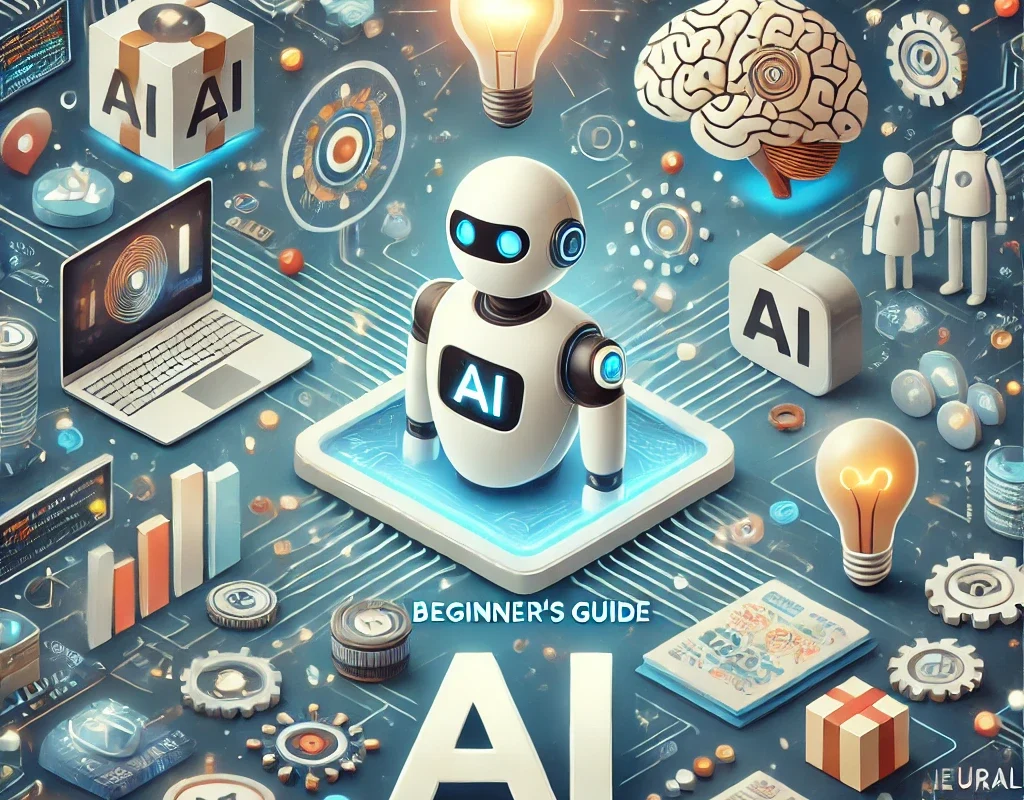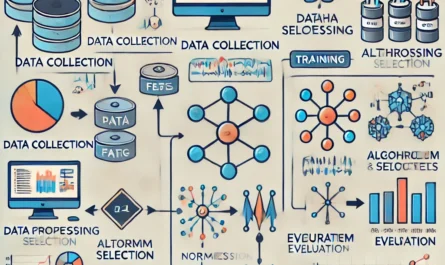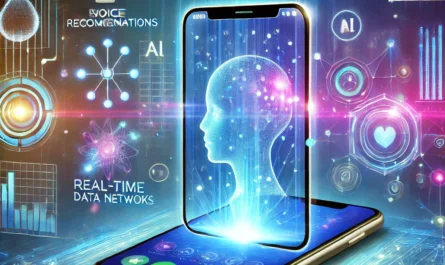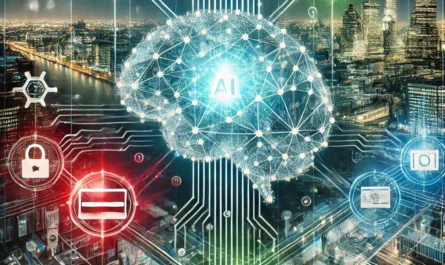Artificial Intelligence (AI) has transitioned from a futuristic concept to an integral part of our daily lives. From personal assistants like Siri and Alexa to smart home devices and predictive algorithms, AI is shaping the way we interact with technology. If you’re new to the world of AI, you might be wondering how to get started. This guide will walk you through the fundamental steps and essential tools needed to dive into artificial intelligence, making the learning process less overwhelming and more engaging.
Understanding Artificial Intelligence
At its core, AI is a branch of computer science that aims to create machines capable of mimicking human intelligence. The goal is for machines to perform tasks that would typically require human cognitive functions such as learning, problem-solving, perception, and decision-making. AI isn’t one technology but a set of different tools and techniques, from rule-based systems to complex algorithms capable of learning from data.
How Does AI Work?
AI functions by utilizing algorithms, which are sets of rules or instructions that a machine follows to achieve specific goals. Machine learning (ML) and deep learning (DL) are two critical components that drive AI systems. Machine learning allows machines to learn from past data and make predictions, while deep learning, a subset of ML, uses artificial neural networks to simulate human decision-making.
AI systems process large volumes of data, learn patterns, and make decisions or predictions without being explicitly programmed to perform every task. For instance, an AI-powered chatbot can learn from user interactions and improve its responses over time without human intervention.
The Different Types of AI
AI is commonly categorized into two main types: weak AI and strong AI. Weak AI, also known as narrow AI, refers to systems designed to perform a specific task, such as facial recognition or voice assistance. These systems cannot perform beyond their programmed scope. Strong AI, on the other hand, is still theoretical and would represent machines capable of general intelligence, mirroring human reasoning and adaptability across various tasks.
Why AI is Important
Artificial Intelligence is more than a technological trend; it’s a transformational force in nearly every industry. AI is automating processes, enhancing efficiency, and allowing businesses to make data-driven decisions. In healthcare, AI is used to diagnose diseases with greater accuracy. In finance, predictive models driven by AI are helping institutions anticipate market movements. AI’s role in society is expanding, making it an essential skill set for future careers across diverse fields.
What You Need to Start Learning AI
To start your journey in AI, you don’t need a PhD in computer science. What you do need is curiosity, dedication, and the right resources. The first step is to become familiar with basic AI concepts, which will form the foundation for more advanced learning. Some essential tools and technologies for beginners include:
- A good grasp of mathematics: Especially statistics, probability, and linear algebra.
- Basic programming skills: Python is the most popular language for AI development, and knowing how to code is a prerequisite.
- Understanding data: Since AI revolves around data, learning how to manipulate, clean, and analyze datasets is vital.
- AI frameworks and libraries: Tools like TensorFlow, Keras, and PyTorch are commonly used to build AI models.
Getting Familiar with AI Terminology
As a beginner, you’ll frequently come across AI jargon, which can seem intimidating at first. Here are a few key terms to familiarize yourself with:
- Algorithm: A set of rules that AI uses to learn from data.
- Neural Networks: Models inspired by the human brain, used to recognize patterns and make decisions.
- Training Data: The data fed into an AI model to “train” it.
- Inference: When an AI system applies its learned knowledge to new data to make predictions.
- Overfitting: When a model learns too much from training data, making it less effective on new data.
Understanding these terms will help you navigate the world of AI more confidently.
Python: The Best Programming Language for AI
Python is considered the go-to programming language for AI development, especially for beginners. Its simple syntax and vast array of libraries make it ideal for building AI models. Whether you’re creating a machine learning algorithm, working with data, or building neural networks, Python has tools for every aspect of AI. Popular libraries like TensorFlow, Scikit-learn, and NumPy make the development process smoother, while Python’s vast community ensures that you’ll find plenty of resources, tutorials, and support.
AI Frameworks and Libraries
When it comes to developing AI systems, frameworks and libraries do a lot of the heavy lifting. Instead of writing algorithms from scratch, you can use pre-built libraries to implement AI models quickly and effectively. Some of the most widely-used frameworks include:
- TensorFlow: Created by Google, this library is excellent for machine learning and deep learning models.
- PyTorch: Developed by Facebook, PyTorch is known for its flexibility and is highly popular in research and development.
- Keras: A high-level neural network API, Keras is built on top of TensorFlow, making it user-friendly for beginners.
Using these tools allows you to focus more on the application and less on the technical complexities.
Choosing the Right AI Learning Path
AI is a vast field, so choosing the right learning path depends on your goals. If you’re more interested in practical applications, you might start by learning how to build basic models with Python. If you’re academically inclined, diving into the theories of AI, such as neural networks and reinforcement learning, may suit you better. You can either follow self-paced learning through online resources like Coursera or edX or consider formal education like university courses if you’re aiming for a deeper understanding.
Getting Hands-On with AI Projects
The best way to learn AI is by doing. Start with small, manageable projects that allow you to apply your theoretical knowledge. For example, you could create a simple chatbot, build a recommendation system, or train a model to recognize images. These beginner-friendly projects will give you practical experience while reinforcing your learning.
Understanding Machine Learning Basics
Machine learning is at the heart of modern AI. It’s the process by which machines improve their performance over time through data. Machine learning algorithms, like decision trees and k-nearest neighbors, analyze data and identify patterns. These algorithms are used in applications such as predictive analytics, natural language processing, and even autonomous driving.
Supervised vs Unsupervised Learning
There are two main types of machine learning: supervised and unsupervised learning. Supervised learning involves labeled data, where the system learns from input-output pairs. For example, teaching a machine to recognize cats by feeding it labeled images of cats and non-cats. Unsupervised learning, on the other hand, deals with unlabeled data and looks for hidden patterns or groupings without explicit guidance. Both types are critical in different AI applications, and understanding their differences will help you choose the right approach for your projects.
The Power of Deep Learning
Deep learning takes AI to the next level by using artificial neural networks to solve complex problems. These networks consist of layers of interconnected nodes (neurons) that process information in a way similar to the human brain. Deep learning has powered significant advances in image and speech recognition, self-driving cars, and even game-playing AI like AlphaGo. Though deep learning is more advanced, understanding its basics is crucial for anyone looking to excel in AI.
You can also read; How to Conduct a Successful Keyword Research for SEO
AI in Everyday Applications
Artificial Intelligence is no longer confined to tech labs; it’s deeply embedded in our everyday lives. Virtual assistants like Google Assistant, recommendation algorithms on Netflix, and personalized ads on social media are all powered by AI. Even the spam filter in your email is an example of AI working behind the scenes to make our lives easier.



